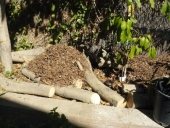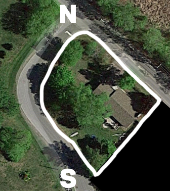








Idle dreamer
 3
3








Medicinal herbs, kitchen herbs, perennial edibles and berries: https://mountainherbs.net/ grown in the Blue Mountains, Australia








 1
1




Let's go surfing in my spinach




"Also, just as you want men to do to you, do the same way to them" (Luke 6:31)








Sometimes the answer is not to cross an old bridge, nor to burn it, but to build a better bridge.
 1
1









Medicinal herbs, kitchen herbs, perennial edibles and berries: https://mountainherbs.net/ grown in the Blue Mountains, Australia




 1
1




Idle dreamer
 1
1




Erwin Decoene wrote:
I'm not familiar with this zoning thing you use in the States. Where can i find some explanations ?
Idle dreamer

|
You're not going crazy. You're going sane in a crazy world. Find comfort in this tiny ad:
The new kickstarter is now live!
https://www.kickstarter.com/projects/paulwheaton/garden-cards
|





